Motorcycle tire mounting and balancing prices
The Overage Cost of Mounting and balancing the motorcycle tires (front & rear tire both) is from $40-50 but I will suggest you not give more than $50 for mounting and balancing the motorcycle tires.
If the motorcycle mechanic quotes more than that I will suggest you take the wheels by yourself so this way the charges will become even more down.
I and My friend goes to 21 Shops and quoted the price some of them were quoted $50 but some of them quoted $130-150. (the price also includes a tire disposal fees)
However, some shops will charge zero if you buy a motorcycle tire from them. but again it may charge you a little bit for mounting and balancing but it will be up to $20.
In Some Places, the Shop’s owner will try to charge you more, but they may give you the best price to beat their competition in some areas. Another Fact is That in Large Cities,s the charge for mounting and balancing motorcycles will be way higher than in small towns.
How much will you give for mounting and balancing motorcycle tires if you ask me: I won’t give more than $50. (it depends on my area).
Table of Contents
The Reason Why Shops In Cities Charge More MoneyThere is one reason that shops in cities charge more.
It’s because in the cities there are more customers than in small towns, Therefore, they don’t care if someone goes to another shop or does it themselves. But if someone agrees to pay $150-180 Then the Shops will Earn More Money.
But compared to Small towns where shops didn’t have Many Customers they agree to Mont and balance the Tires for less money.
Who Can/will Mount Motorcycle TiresThe tire shop has a skilled worker who can mount and balance tires.
But what happens if you want to mount and balance your motorcycle tires see below
How You Can Mount and Balance Your Motorcycle TiresAlmost everyone has a motorcycle and all motorcycles come with tires. Tires play a crucial part in the comfort of your Motorcycle, if you have even one flat and need to be repaired then you can surely imagine how much discomfort it brings.
Tires play a crucial part in the comfort of your Motorcycle, if you have even one flat and need to be repaired then you can surely imagine how much discomfort it brings.
Today, our focus is on motorcycle tires, more specifically mounting them and balancing them properly to ensure that they run smooth and last long.
If you happen to be new to mounting motorcycle tires or have not done so before, some things should put you at ease.
All mounting equipment required is readily available from shops. The only challenge might be identifying the information given on the tire sidewalls which will help find the correct matching specifications for mounting and balancing your wheels.
Mounting and balancing motorcycle tires is very easy. If you want to pay someone else it will not good at all. But to do it, you will need some special tools to mount and balance motorcycle tires which is
And to Balance your motorcycle tire you need a Balance Stand And Wheel weights
When mounting motorcycle tires it’s important to let the air inside the tire out. To do this, use a long-bladed screwdriver and insert it into the valve stem hole located at the center of the wheel mounting area.
To do this, use a long-bladed screwdriver and insert it into the valve stem hole located at the center of the wheel mounting area.
Push firmly on the tire bead to make sure there is good contact with the mounting surface as you press down on its air chamber. This should cause an audible hissing sound which will alert you that all of its air has been successfully released from inside.
Then spray a little Windex around the tires after doing that remove the tube from the rim while doing this put the tire irons to do it easily remember some tires can be easily removed with two iron tires but some may be removed with the three tire irons
Then remove the tire and repeat this process for the other side of the tire as well.
Once you remove the tire it’s time to put another tire into the rim.
But before doing that I will suggest giving some heat to the tire you can do it in two ways. One is the sun and the second is the hairdryer.
For a more in-depth method, I will suggest watching this video it will help.
Motorcycles need to be balanced so that they are able to spin smoothly while you are driving. If the tire is not properly aligned, it will shake violently when it spins too fast and throw your entire ride off-balance with its vibrations. This can become dangerous over time as more problems crop up from a poor balance.
Most people don’t know but tires can be very dangerous to have unbalanced. There are many negative aspects of having an unbalanced tire, such as not being able to control your motorcycle properly.
Luckily professionals can come to check on how well-balanced they are for those who need help with these things or just want their ride smoother in general by using weights when needed!
Balancing tires is an important part of keeping yourself safe on the road.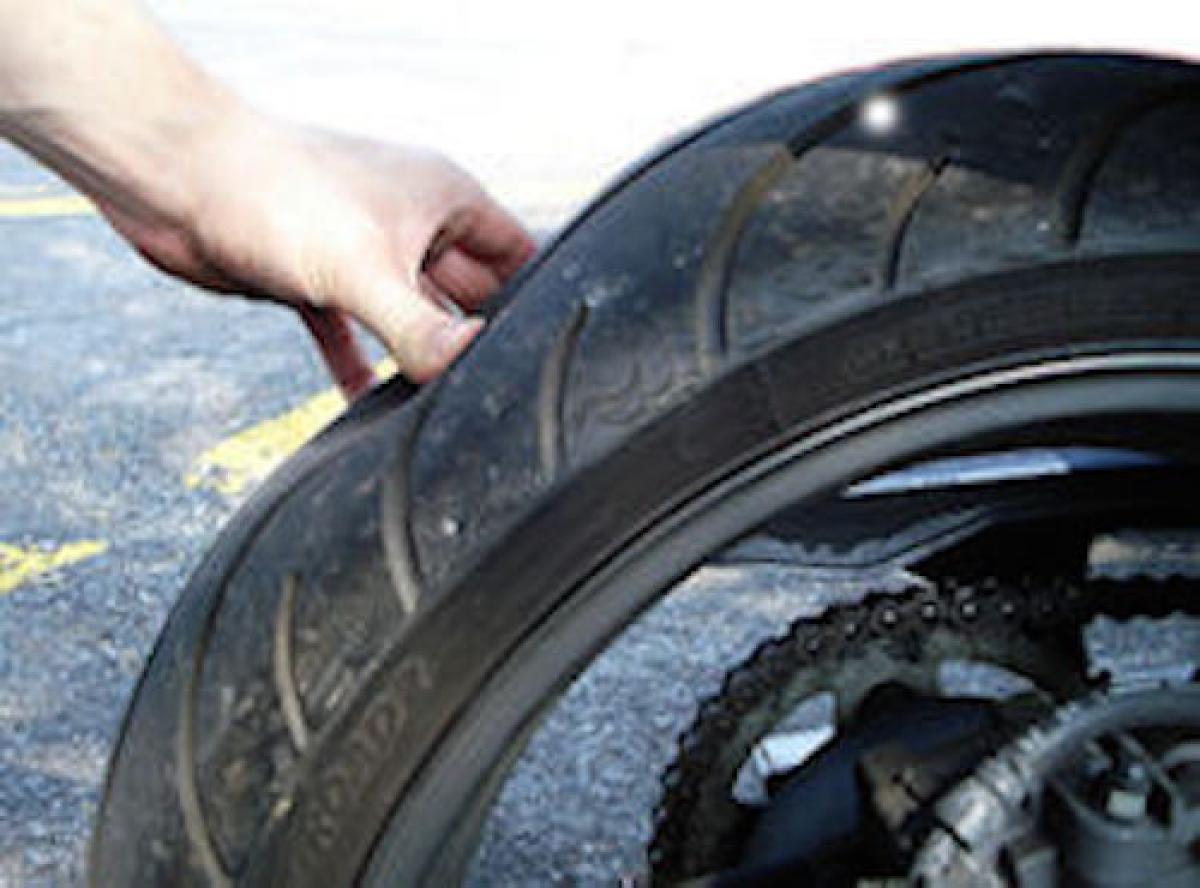 From time to time, you may need your tire balanced in order to prevent any problems and make sure that they are not wearing out too quickly.
From time to time, you may need your tire balanced in order to prevent any problems and make sure that they are not wearing out too quickly.
Manufacturers recommend having them checked every 8,000-10,000 miles depending on factors like driving habits or terrain conditions which can increase wear and tear more than on normal roads.
Tires must be rebalanced periodically because there are many different things that affect their balance such as air pressure changes due to weather fluctuations between seasons but also uneven
Rough roads can quickly unbalance your tires and throw them off track. If you are regularly driving on rough terrain, then it is important to get your tire checked more often than the recommended 10,000-mile interval.
Rough road conditions may be closer to an 8000-mile frequency of balancing for optimal performance that will help avoid any unwanted blowouts
The off-balance signs on a motorcycle are often difficult to detect unless you’re paying close attention. If your bike is making odd noises like an unusual vibration, it’s time for new tires or adjustment of the wheel alignment. (rear-wheel or front wheel)
If your bike is making odd noises like an unusual vibration, it’s time for new tires or adjustment of the wheel alignment. (rear-wheel or front wheel)
As long as you keep things in mind and look out for signs that things are off-balance, then life will be easy! Signs such as weird vibrations when accelerating can indicate there might be something wrong with newly installed tires – so don’t forget about them.
Should You Ever Mount and Balance your motorcycle Tires Yourself?Mounting and balancing tires is not a job that you’re going to be able to tackle yourself in most cases.
Unless you’re an expert with access to the proper equipment, it’s best left up for professionals who can do the work and make sure your ride stays safe on all terrain. They’ll have everything necessary from tire changers, rotations machines, mounts/balancers you name it!
ConclusionConclusion paragraph: Today, we’ve learned about the cost of mounting and balancing motorcycle tires.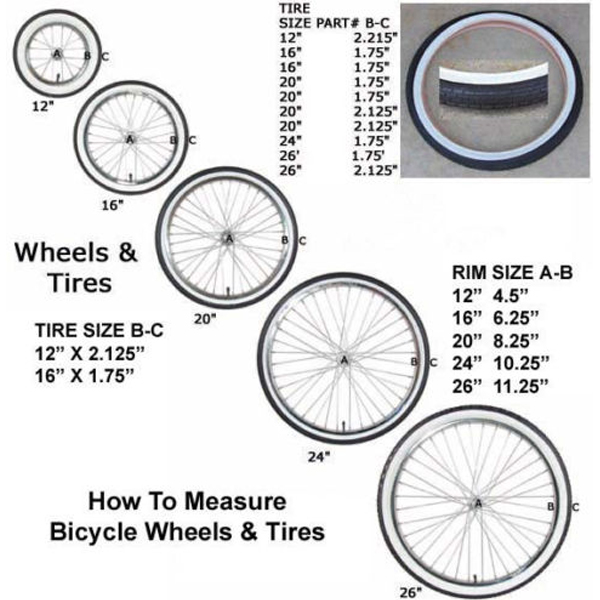 We hope you found this information helpful. If so, please share with your friends on social media or in-person today to help them make informed decisions when it comes time for their next tire purchase. Thank you for reading our blog post have a great day!
We hope you found this information helpful. If so, please share with your friends on social media or in-person today to help them make informed decisions when it comes time for their next tire purchase. Thank you for reading our blog post have a great day!
As a rule of thumb, it costs about $20-$80 to change a motorcycle tire. If you take off the wheels and bring them into a shop you can expect to pay $20-$40 per wheel. But if you bring the whole bike into the shop be prepared to pay $40-$80 per wheel, in addition to the cost of the tires of course. Some dealerships may quote you much more, but don’t be ripped off!
If you want to learn more about motorcycle tire change costs, you are in the right place.
We at PowerSportsGuide have gathered the average prices as well as the cheapest solutions under one roof!
How much does it cost to change motorcycle tires?It’s safe to say that the cheapest way to change motorcycle tires would be if you do the work yourself.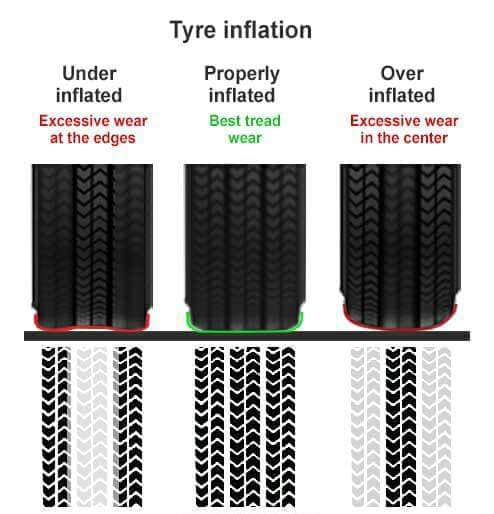 However, as you will see, this is not recommended for security reasons.
However, as you will see, this is not recommended for security reasons.
A reputable shop can not only professionally mount your tires, but they also balance the wheels with a special rebalancing machine.
Balancing the wheels is very important since only a slight weight difference can lead to vibration. That’s why it’s recommended that you get the tire change done by a professional who can rebalance the wheels along with changing the tires.
Moreover, many shops offer a discount or don’t even charge for the change if you buy the tires from them.
You can also keep your costs low if you pull the wheels off yourself and bring them into the shop. This way it will cost about $40-$80 to change a pair of motorcycle tires.
On the other hand, many riders simply prefer riding to a dealership or a local shop to get the tire change done. This is arguably the most convenient solution, but also the most expensive!
If you are also considering visiting a shop, it’s recommended that you shop around to find the best rates available.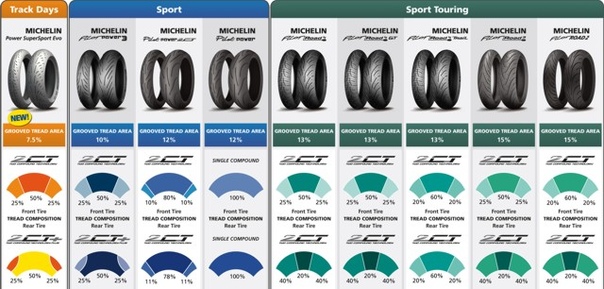 The labor costs vary widely depending on the size and location of shop.
The labor costs vary widely depending on the size and location of shop.
As you may assume, you can expect the highest rates at authorized dealerships. It’s not uncommon for dealers to quote $150-$400 to change motorcycle tires!
In contrast, small local shops are significantly cheaper, as they usually charge $80-$160 for the entire job.
It’s also good to know that replacing the tire on the front wheel is always significantly cheaper than the rear, a 50% difference in price between the two wheels is not uncommon.
However, best practice is to replace both tires at the same time!
Can I change a motorcycle tire myself? – we get this question a lot and the answer is that it depends. Although it is possible to change the tires on your motorcycle at home, in most cases this is not recommended. Why?
When it comes to motorcycles, the primary consideration should always be safety.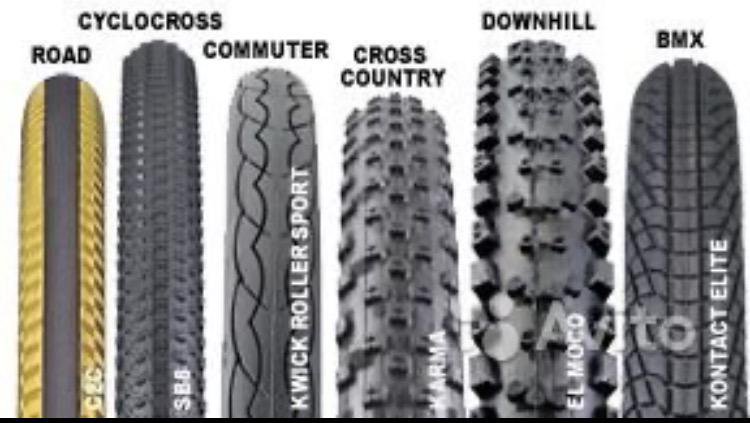
And improperly mounted tires can be dangerous in many ways, so it’s not worth the risk of gambling with them! Contrary to popular belief, changing tires requires skill as well as some specialized tools.
Even if you can properly mount the tires, you always risk scratching the rims or damaging the new tires.
Additionally, a professional shop not only changes the tires, but their service typically includes the balancing, lining, setting the chains tight, and a test ride as well.
Although you can do all of these tasks yourself, it still takes time and effort. It may take hours just pulling the wheels off, mounting and inflating the tires, and finally balancing and replacing the wheels.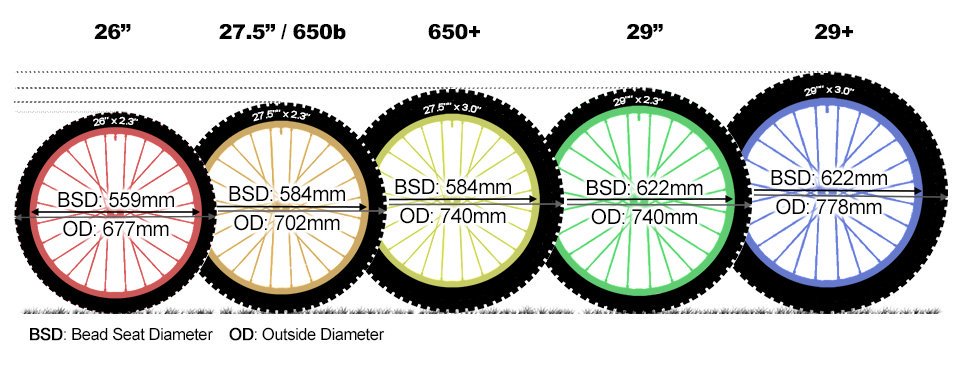
This is why best practice is to get it done by a tire shop. Let’s see where you can find one!
It’s safe to say that the majority of tire shops can change motorcycle tires, even dedicated auto tire shops. In most cases, it makes sense to visit a local shop rather than ride many miles to a dealership. What’s more, local shops are typically much cheaper as well! But to make sure they can handle the change it’s worth a phone call first.
Whether you can change a motorcycle tire on a car tire machine is strictly dependent on its design. While many older machines could change motorcycle tires without any issues, modern machines clamp on the rim and feature a rotating table. This means if you want to change a motorcycle tire on these machines you will likely need an adapter, which holds the wheel higher off the rotating table.
Unfortunately, many of the newest car tire machines can’t be used at all to change motorcycle tires. This is because some manufacturers don’t provide adapters for motorcycle wheels.
If you have access to a tire machine and are considering replacing the tires yourself, make sure to have somebody close by who is familiar with using the machine.
Operating a tire machine is not rocket science, but like any other power tool it can be dangerous in many ways. Doing it wrong can damage the tire or even the surface of the rim!
If you want to change the tires on your motorcycle you have four options:
DIY tire replacement: Even if this is the cheapest way to change the tires unless you’re an experienced mechanic it’s not recommended that you do it yourself. Keep in mind that doing it wrong can damage the tires or even the rims. Keeping safety in mind, best practice is that you leave it for professionals.
Keep in mind that doing it wrong can damage the tires or even the rims. Keeping safety in mind, best practice is that you leave it for professionals.
Remove the wheels: Many riders prefer pulling the wheels and bring into a local shop or a dealership, so you may want to consider this solution. This way, you can get much better rates while making sure that the tires are professionally replaced and balanced. If you bring the wheels in yourself, changing a pair of motorcycle tires typically costs $40-$80 in most tire shops.
Ride to a tire shop/dealership: The most convenient solution is arguably riding into a tire shop or a dealership to get the job done. The rates of smaller tire shops range from $40 up to $80 while dealerships can even quote $150-$400!
The rates vary widely depending on the size and the location of the shop, so it makes sense to shop around before making a decision!
A modern motorcycle is a high-speed vehicle, the use and maintenance of which is due to a number of specific requirements. One of them is the timely appeal to the services of motorcycle tire fitting ( 1 ) , which significantly increases the safety of driving this type of transport.
One of them is the timely appeal to the services of motorcycle tire fitting ( 1 ) , which significantly increases the safety of driving this type of transport.
According to their purpose, motorcycle tires differ from automobile tires in a wide variety, but four main types can be distinguished:
When choosing them, it should be borne in mind that diagonal ones are suitable for heavy motorcycles and can withstand heavy loads, providing good grip on the wheels, but they also wear out quickly. Radial should be put on light motorcycles. The cord layers of these tires are located perpendicular to the direction of rotation of the wheel, the technology of their manufacture increases their wear resistance.
( 1 ) More about motorcycle tire service : go to...
Calculating the life of a tire is quite difficult.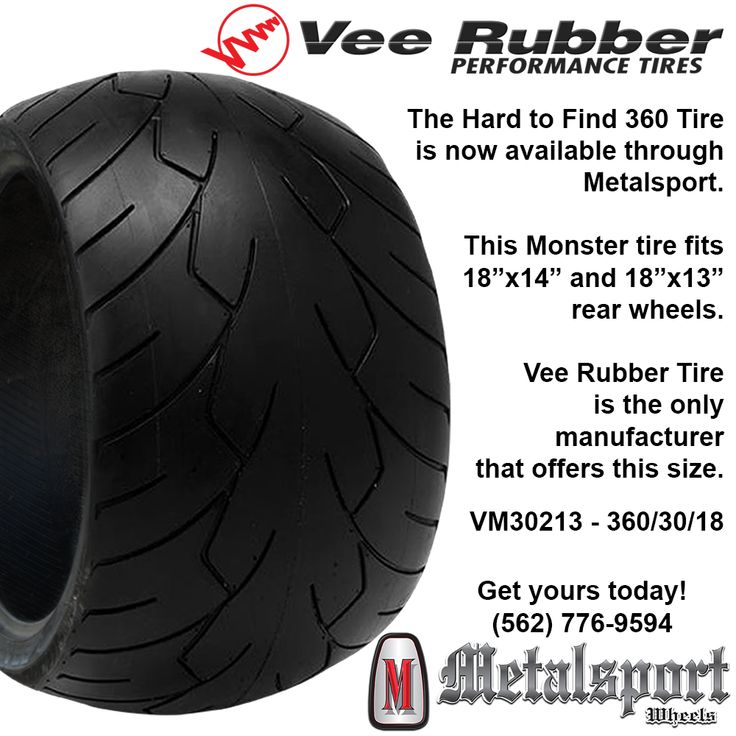 It can be affected by many different factors: weather conditions, storage and operating conditions. External signs of aging or wear - deformations or cracks in the tread, in the shoulder areas or on the sidewalls can be seen during an external examination. Therefore, the motorcycle owner can be advised, taking into account the specifics of our roads, to check the general condition of the tires more often, the residual depth of the tread pattern, monitor the moments of any impact damage or signs of uneven wear, check the air pressure. If such defects of the wheels are found, it is necessary to contact the technical service station for replacement or troubleshooting.
It can be affected by many different factors: weather conditions, storage and operating conditions. External signs of aging or wear - deformations or cracks in the tread, in the shoulder areas or on the sidewalls can be seen during an external examination. Therefore, the motorcycle owner can be advised, taking into account the specifics of our roads, to check the general condition of the tires more often, the residual depth of the tread pattern, monitor the moments of any impact damage or signs of uneven wear, check the air pressure. If such defects of the wheels are found, it is necessary to contact the technical service station for replacement or troubleshooting.
Modern tires are durable and able to withstand a certain number of impacts, but sometimes a breakdown can occur with them. In this case, it is most convenient to contact qualified specialists who will perform a full inspection and be able to make sure that the inner layer of the tire has not received any irreparable damage.
Tires can wear unevenly, this is often a sign of a mechanical problem: worn shock absorbers, transmission, mounts... Or due to wheel imbalance. This is also why it is worth checking the wheel balance at least every six months and, if an imbalance is found, then promptly eliminate it, without waiting for all the problems that may arise.
Motorcycle maintenance is a rather specific event that requires special equipment and the presence of craftsmen who understand the essence of this process. This set of works includes, in particular:
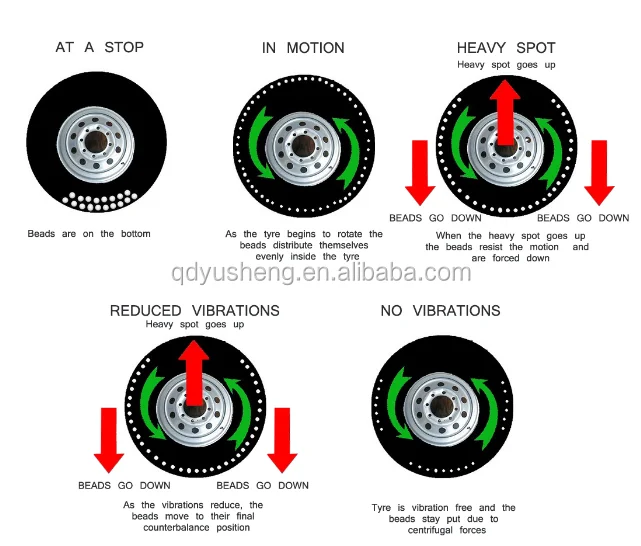
Such actions are practically impossible without the presence of motorized lifts and supporting safety crane beams, modern balancing stands with special software and mechanical devices such as special adapters. So, for example, the availability of Hofmann equipment (Hofmann) makes it possible to balance almost any motorized wheels of any manufacturer.
Not all motorcycle owners use them all year round. Therefore, the problem of seasonal tire change is most often not present. Which seems to make it possible to mess with the wheels less than in the case of cars. However, the safety issue alone makes us take the maintenance of motorcycle tires and rims seriously. Moreover, this way "two birds with one stone" are killed: not only more safety, but also less wear and tear of rubber and suspension...
Tires are the only thing that connects a motorcycle to the road. Handling, dynamics, comfort, cross-country ability of the motorcycle ... and the safety of the driver himself depend on their design and condition. And his concern is to monitor the health of tires and be able to repair them, often in the field.
And his concern is to monitor the health of tires and be able to repair them, often in the field.
THREE SIDES OF THE ONE MEDAL. Any tire is a more or less successful attempt to combine the incompatible. Or, in other words, the conscious deterioration of some tire properties for the benefit of others. This is precisely the difficulty for designers when creating a tire. This is also the complexity of the choice for the consumer. Here are the three main properties that a road tire should have.
The first is to ensure reliable traction. On asphalt, soft rubber has the best grip (which is especially important in corners). But it wears out quickly, losing its properties. Moreover, tires with a soft compound are very demanding on their own temperature and seriously lose when cold.
The second (for the rear wheel) is to realize a large moment. It is because of this that the rear tires on modern motorcycles are at least thirty percent wider than, say, motorcycles twenty years ago. But again there was a minus - due to the increased width, the maneuverability of the motorcycle worsened.
But again there was a minus - due to the increased width, the maneuverability of the motorcycle worsened.
Third (more for the front wheel) - informative. The tire should “inform” the driver about the condition of the roadway, which is especially important for fans of fast driving. The disadvantages of "detailed information" are an excess of vibrations transmitted from the road and discomfort. The choice of a specific tire for a particular motorcycle depends on many factors - the rider's riding style, his skills, and finally, the budget. Practice shows that the more experienced and skillful the driver is, the less attention he pays to a particular brand (all world-famous manufacturers mainly offer products of a similar level) and more to the condition of the tire and the pressure in it. Of course, if you are the owner of a sportbike, you should not install purely tourist tires on it, but sports pseudo-slicks for driving on wet city streets will not work well.
Road and sport bikes mainly use radial (RADIAL TYPE) tires. They are the most resistant to deformations that occur at high speeds and loads, provide a more regular contact patch and lower internal rolling losses. The threads of the carcass of a radial tire are located in planes passing through the axis of rotation of the wheel and, accordingly, do not intersect. Above the frame is a strong, as a rule, multi-layer breaker with a base of steel or synthetic threads, which perceives and distributes loads. A radial tire has less internal friction, hence less heat.
They are the most resistant to deformations that occur at high speeds and loads, provide a more regular contact patch and lower internal rolling losses. The threads of the carcass of a radial tire are located in planes passing through the axis of rotation of the wheel and, accordingly, do not intersect. Above the frame is a strong, as a rule, multi-layer breaker with a base of steel or synthetic threads, which perceives and distributes loads. A radial tire has less internal friction, hence less heat.
Bias (BIAS TYPE) tires are much simpler and therefore cheaper to manufacture than radial tires. They are more durable on bad roads, but heavier and have greater internal friction losses than radial ones. "Diagonals" have proven themselves well on enduro and motocross bikes.
In a bias tire, the carcass strands are angled to the direction of travel and cross, unlike a radial tire. The number of plies in the carcass is often indicated on the tire label (usually 2 to 6). The larger it is, the more load the tire can withstand. There are also BIAS-BELTED tires. They have an additional reinforcing belt on top of the carcass, just like radial tires.
There are also BIAS-BELTED tires. They have an additional reinforcing belt on top of the carcass, just like radial tires.
The first two digits in the oval indicate the week, the last two indicate the year the tire was manufactured.
TIRE FIT AND DIMENSIONS. It is believed that rubber stored for more than a year loses its hermetic properties. In fact, the layer is not. Thomas Bischoff, Market Development Manager for Eastern Europe at Metzeler, explained that in the past, rubber did crack quite quickly when exposed to sunlight. But for more than twenty years, thanks to special additives, the tire can be stored without loss of properties for at least five years. Even on the street. The only type of tires that this does not apply to are racing slicks. It is believed that they do not stand on a motorcycle for a long time, and there is no sunlight in the warehouse. Therefore, “extra” components are not added to the composition of their compound.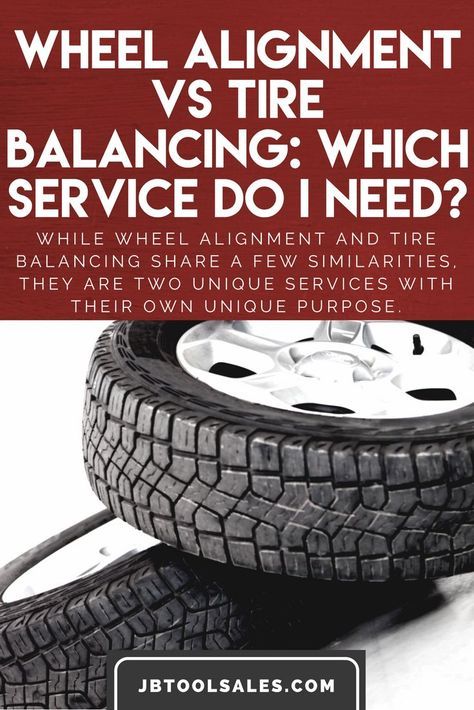
Each tire has tread wear indicators. As a rule, these are visible "bulges" (bridges) in the grooves of the tread. On the sidewall opposite these indicators are the letters TWI (Tread Wear Indicator). If the indicator at least in one place has begun to wear out, the tire must be replaced immediately. Without regret!
HOW MUCH TO DOWNLOAD? On any production motorcycle you will find a plate that will show the pressure when riding alone and with a passenger. In everyday life, you can safely follow these instructions. But in some cases, the recommendations will have to deviate. First of all, this applies to multifunctional motorcycles - enduro. Typically, the indications for them refer to road tires. When replacing tires with off-road tires, the pressure is usually lowered. As a rule, it should not exceed 1.8–2 atm (for light enduro there are hard tires in which it is recommended to maintain 1 atm). Off-road tires with a pressure above 2 atm behave disgustingly both on asphalt and on a country road! But on them you can carefully get to the place of repair and in case of a puncture - if the tire does not turn on the rim.
When using sports bikes on the track, the pressure must also be reduced. A "stove" for light vehicles can be considered 2.0 atm in the front and 1.8 atm in the rear wheel. Reducing the pressure allows you to increase the contact patch of the tire with the road, which is especially important in corners. And don't forget to inflate the wheel after your track workout! Driving with low pressure on the motorway will lead to increased tire wear and can be unsafe (because on the track the tire heats up, due to which the pressure still rises). When traveling on a loaded road bike, the pressure in the rear tire can be increased to 3 atm to increase the life of the rear tire. But don't do this if your route is through winding mountain roads or if you're traveling in cold weather.
Replace tires that are unevenly worn from long freeway driving. Flat in the middle and virgin along the edges, the tires behave very insidiously in turns and on uneven roads (especially in ruts and on longitudinal sections of asphalt), and in the rain they generally cease to hold.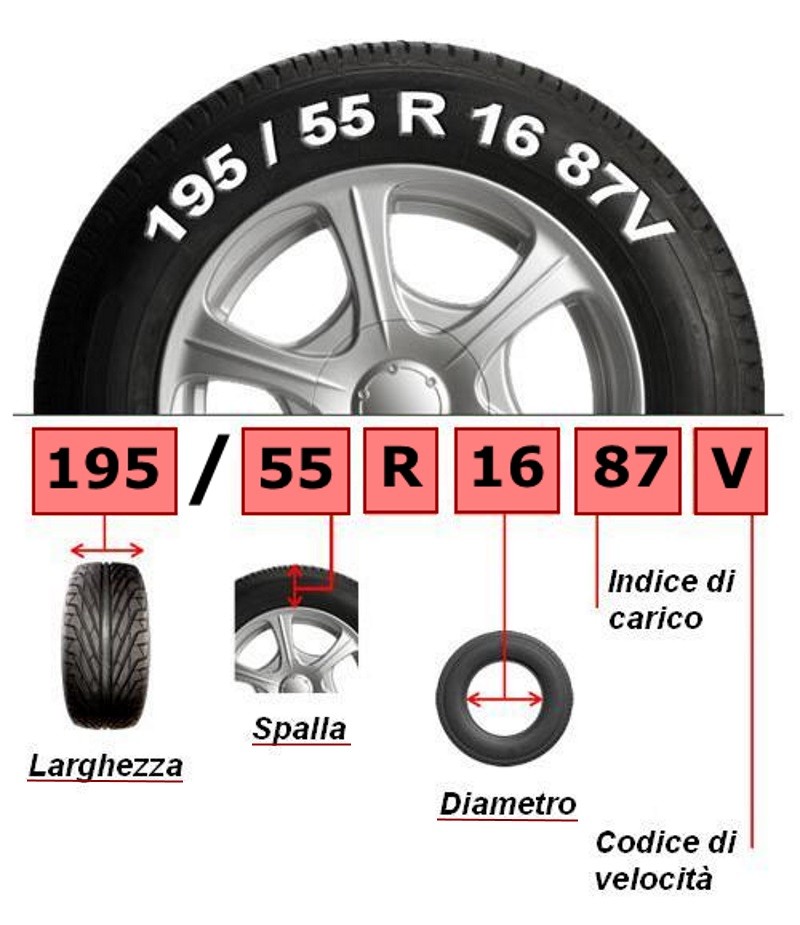
REPAIRING A TUBELESS TIRE. Flat tire. If this happened while driving at high speed on the highway, you will not notice that the pressure has dropped. Centrifugal force at speeds over 160 km / h will not allow the tire to squeeze through to the rim. (On the other hand, the same force can release air from the wheel by “squeezing” the nipple valve inward. Make sure that a cap with a sealing rubber gasket is always screwed on the nipple!) Trouble will show up at the most inopportune moment - during braking. Most often, the culprit of a puncture - a nail, a screw, or a piece of glass - gets stuck in the tire. If you don't have a special kit for repairing tubeless tires with you, it's bad, but do not rush to remove the self-tapping screw from the wheel. All is not yet lost. You can try to ask a good car enthusiast for a pump, pump up the wheel to maximum pressure and rush to the nearest tire service. (You need to find out about his whereabouts before you start pumping a leaky tire, because you will have no more than seven minutes on the road.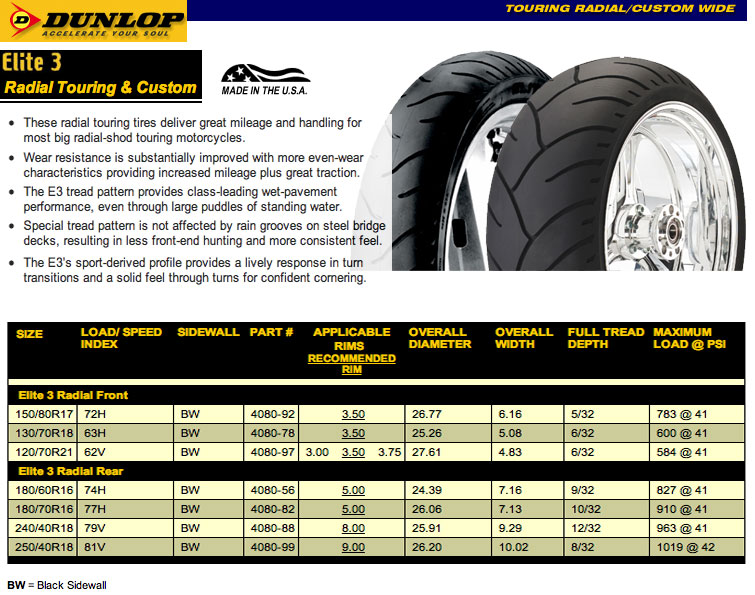 ) Focus failed? We call a tow truck.
) Focus failed? We call a tow truck.
Tubeless tire repair kit.
If you did not rely on chance and stocked up on a repair kit, there is a chance to leave on your own.
Carefully remove the self-tapping screw (nail, glass) from the hole. We take a special hook from the set - a needle file and insert it through the hole into the tire cavity. We process the inner surface of the hole with reciprocating movements. We don't get carried away! The tool should pass into the hole with a slight but perceptible resistance. Squeeze the glue from the kit into the hole.
We take a rubber band (they are both round and in the form of a figure eight), also coat it with glue, hook it onto the hook of a universal tool and insert it into the hole with a confident movement.
The further process is a real art, the culmination of the whole action, and each master performs it in his own way. Someone pulls smoothly, gently shaking, someone drags boldly and sharply. The point is to remove the tool from the hole so that the inserted tourniquet remains inside. A few crampon workouts in the garage will help a lot, and on the road, you will effortlessly handle repairs.
Someone pulls smoothly, gently shaking, someone drags boldly and sharply. The point is to remove the tool from the hole so that the inserted tourniquet remains inside. A few crampon workouts in the garage will help a lot, and on the road, you will effortlessly handle repairs.
After removing the instrument, cut off the protruding remnant of the flagellum.
Now it remains to inflate the wheel with compressed gas cylinders. They need to be carried at least two, since one is not enough for the rear wheel. Remember, when the tire is inflated, the balloon cools - do not touch it with bare hands. In Europe, it is generally accepted that a repair with a flagellum does not give a 100% guarantee, since under the action of centrifugal force at high speeds, the flagellum can leave the tire. And despite the fact that in practice I have not seen this, I advise everyone to listen to the opinion of European colleagues. Take a look at the service and ask to change the tourniquet to a “fungus” or a patch that is more securely fixed from the inside of the tire. But a puncture with a diameter of more than 5 mm or in the side of the tire, or a "hernia" is useless to repair. It's a shame, you have to part with such a tire.
But a puncture with a diameter of more than 5 mm or in the side of the tire, or a "hernia" is useless to repair. It's a shame, you have to part with such a tire.
HOW TO BALANCE? When picking up a motorcycle from a tire shop, it is worth checking the work of the master. First of all, make sure that the arrow drawn on the side of the tire corresponds to the direction of rotation of the wheel. At the same time, the type and shape of the tread should not confuse you in any way. It is also important that the marking of the lightest part of the tire (usually a bright circle painted on the sidewall of the tire) is near the valve. Otherwise, the wheel will have to be weighted with additional balancing weights that spoil the look of the motorcycle.
Too many motorcyclists torment tire workers in an effort to achieve perfect dynamic wheel balance. In vain! First of all, the width of the motorcycle rim (even the rear one) is relatively small, as is the possible dynamic imbalance.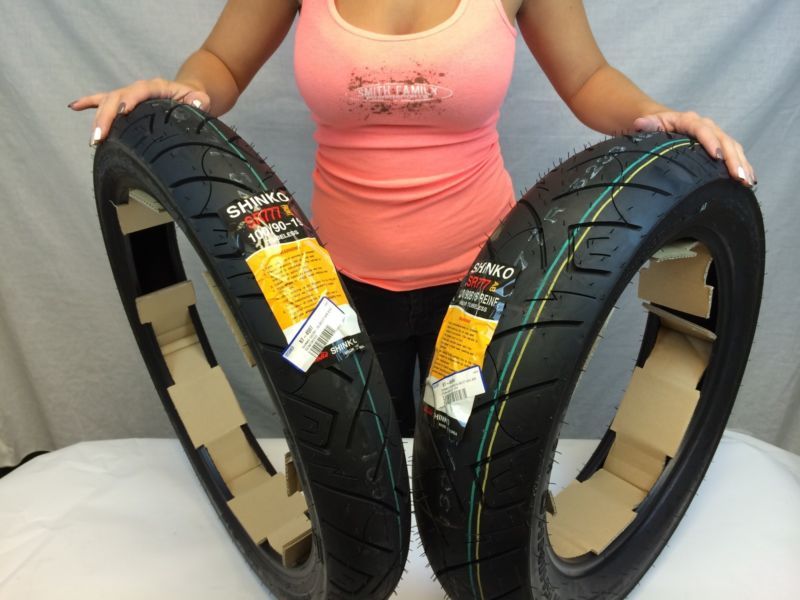 Moreover, it has been experimentally verified that a motorcyclist cannot feel a weight less than 50 g on the rear and 25 g on the front wheel. That is why in many motorcycle factories, regular weights are attached to the middle of the rim, and not to the rim, like in cars. Moreover, even in world-class competitions such as WSBK, tires are manually balanced by spinning the wheel in special cones and gluing a weight against the rim that is below. An imbalance of 10-15 g can be considered the norm and the balancing should be stopped at this point.
Moreover, it has been experimentally verified that a motorcyclist cannot feel a weight less than 50 g on the rear and 25 g on the front wheel. That is why in many motorcycle factories, regular weights are attached to the middle of the rim, and not to the rim, like in cars. Moreover, even in world-class competitions such as WSBK, tires are manually balanced by spinning the wheel in special cones and gluing a weight against the rim that is below. An imbalance of 10-15 g can be considered the norm and the balancing should be stopped at this point.
REPAIRING A TUBE TIRE. A tire puncture should not embarrass a true endurist. After all, he has with him everything necessary “for autonomous navigation”, including the tool needed to remove the wheel and tire fitting, as well as strength, dexterity and experience. In the absence of the latter, this article will be of help. In addition to the tool, you will need a spare chamber (if you take one, it is better to take the front one - it can also be used in the rear wheel, but the opposite will not work) and a pump. On a long trip, it is better to take patches and glue, and now special patches are sold that are designed for a long service life (cut out from the camera are considered temporary, that is, not very reliable, especially at high loads and temperatures). There are also special cans for tire repair, including tube ones, on sale. Their advantage is that they seal the damage and inflate the tire at the same time. Cons - "disposability", the inability to repair a large puncture and the price. Sometimes the water poured into the chamber allows you to do without tire fitting (50-100 ml is enough). With luck, you can drive this way for several hours. And if a rigid diagonal tire is installed on the rear wheel, then on a flat road it allows you to move with a puncture, especially for one driver on a light motorcycle. You just need to balance the speed with the heating of the tire - otherwise it may exfoliate from overheating. From the front, such a trick will not work - the motorcycle will be uncontrollable.
On a long trip, it is better to take patches and glue, and now special patches are sold that are designed for a long service life (cut out from the camera are considered temporary, that is, not very reliable, especially at high loads and temperatures). There are also special cans for tire repair, including tube ones, on sale. Their advantage is that they seal the damage and inflate the tire at the same time. Cons - "disposability", the inability to repair a large puncture and the price. Sometimes the water poured into the chamber allows you to do without tire fitting (50-100 ml is enough). With luck, you can drive this way for several hours. And if a rigid diagonal tire is installed on the rear wheel, then on a flat road it allows you to move with a puncture, especially for one driver on a light motorcycle. You just need to balance the speed with the heating of the tire - otherwise it may exfoliate from overheating. From the front, such a trick will not work - the motorcycle will be uncontrollable.
It is very important to have the right mounts - not too long, "hooky", but also without sharp edges. Experienced travelers sometimes make mounts themselves from wrenches for axle nuts.
To remove the rear wheel, we need a wrench for the rear axle nut; the second key (to hold the axis) is usually not needed. Sometimes the nut sticks to the thread or is simply tightened with a long wrench, and you can’t shake it with a frail regular tool. When tightening the axis, do not overdo it - a moment of 8-10 kgcm is sufficient. By dragging, instead of getting a reliable connection, you will simply ruin both parts. It is not necessary to loosen the chain to remove the rear wheel on an off-road motorcycle, but it is still a good idea to have wrenches with you to tension it (on some motorcycles, the chain is tensioned by a “snail” that does not require keys). When collecting a set of tools on the road, try to do the procedures for which you take them in the garage. Indeed, in an open field (or a dirty swamp) there is nowhere to wait for help!
Indeed, in an open field (or a dirty swamp) there is nowhere to wait for help!
Be sure to loosen the pinch screws on one of the fork legs before removing the front wheel axle. On some motorcycles (where there are two brake discs) you will also have to unscrew the brake calipers, otherwise the wheel cannot be removed. It is desirable to put a set of tools not on the ground, but on a rag.
Loosen the rear axle nut...
...and remove the chain from the sprocket.
Light enduros do not have center stands. Therefore, to remove the wheel, you can lean the motorcycle on a stump or bump. If they don't, no problem. We find a clearing more evenly, close the gas valve and lay the motorcycle on its side so that the axle is pulled up. If you keep an eye on the bike, the axle comes out easily. But woe to those who are lazy! If the axle is rusted to the spacer bushings (or the inner rings of the bearings), without kerosene (WD-40) and a decent-sized mallet, you can’t get it out of there.
It is important not to mix up the bushings (they are not the same everywhere) and not to stain them.
If a large nail does not stick out of the wheel, the search for a puncture should be postponed. We put the wheel with an asterisk on the underlying fabric (or with a rim - but not with knitting needles! - on two logs) so that dirt and sand do not get into the bearings. We unscrew the “shoe” fastening nut (if any), press on the bolt so that the “shoe” moves away from the rims, loosen the nipple. Now you need to press the tire from the rim. The longer a tire has not been changed, the harder it is to do so. We boldly step on the sidewall with the heel of the motorboat closer to the rim and ... bounce.
Sooner or later the tire will come off. (Sometimes the sprocket is far enough away from the edge of the rim and does not allow you to firmly press the wheel to the ground. In this case, you can put the edge of the wheel on the bike's swingarm, using it as a stop. ) Now we need to squeeze both tire beads so that they dive into the recess in the rim. This makes it much easier to remove the opposite side of the bead from the rim.
) Now we need to squeeze both tire beads so that they dive into the recess in the rim. This makes it much easier to remove the opposite side of the bead from the rim.
Hereinafter, in the green frame - the correct position, in the red - incorrect.
We begin to remove the bead of the tire from the nipple so as not to damage the rubber around it with the bead of the tire (yes, at the nipple it will not drown properly). If the edge of the tire cannot be pulled over the bead, then the opposite edges have not fully entered the recess.
We start the first pry bar under the tire, hook the edge, turn it out.
Now, if the length of the mount allows, we bring its rear part under the brake disc. If the mount is short, you will have to hold it with your knee.
Then, using the second pry bar, pull out the edge of the tire in sequence.
Once one side of the tire is completely off the rim, the inner tube can be removed.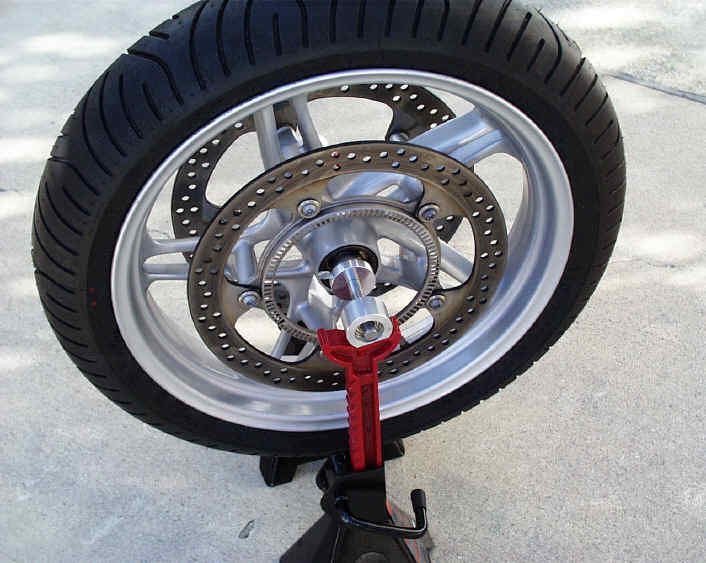 It is worth noting which side it was installed inside the tire.
It is worth noting which side it was installed inside the tire.
After examining the chamber, we find a puncture.
When removing a nail or screw from a tire, it is important not to injure yourself. To make it easier to find damage to the tire, we combine the chamber nipple with the hole in the rim.
Sometimes sticking out ends of the spokes or burrs on their nipples are the culprit for a puncture. This usually happens when the special rubber seal is torn or dislodged, exposing the spokes. If we put a regular patch on rubber glue, we cut it out with an allowance of 15-20 mm from a puncture. We sand the camera and the patch, degrease (with gasoline or glue, removing the dried layer), apply a thin layer of glue, dry for 5-10 minutes, and then press with all our might (you can even wash it with a motorboat) - you're done! If the camera is rubbed against a defect in the tire, during installation we put a piece of an unnecessary camera there. It’s enough to get home, but it’s better to throw away such a tire.
It’s enough to get home, but it’s better to throw away such a tire.
Inflate the inner tube slightly before inserting it into the wheel.
This will help the tube to properly orientate itself inside the tire and reduce the chance of it getting caught and torn by the pry bar or squeezed by the shoe.
Having installed the nipple in the hole, screw the outer nut onto it without tightening it.
Help the camera lie down inside the rim by adjusting it with your fingers. The edges of the chamber must not stick out.
The tire bead can now be inserted, first with the knee, then with the pry bar, in small increments.
It is very important not to “bite” the camera when working with mounts. To do this, only grip the edge of the tire and never raise the mount more than 90°.